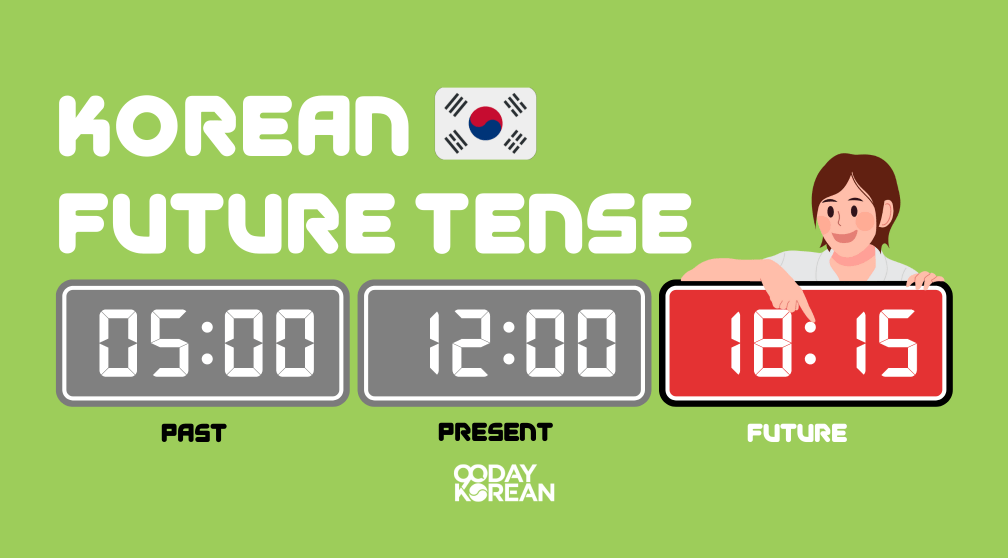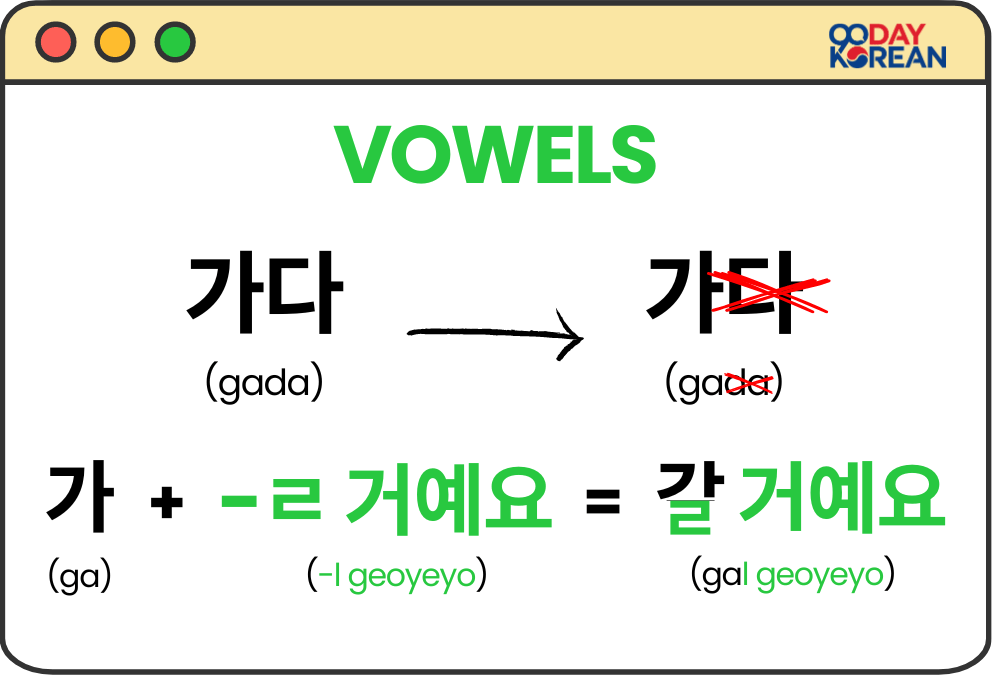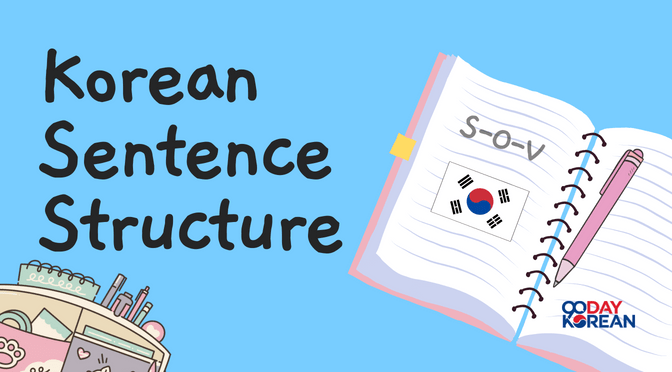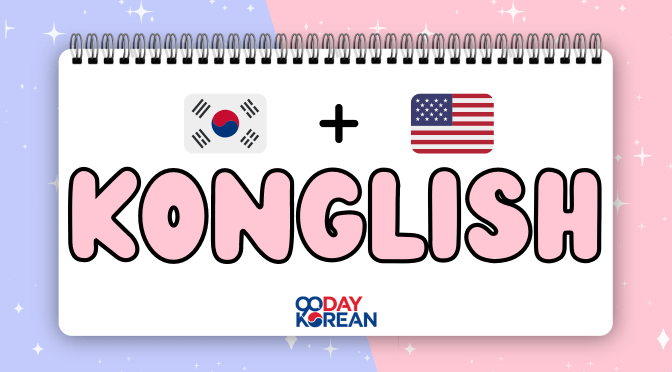To express something in the Korean future tense, use the endings -ㄹ/을 거예요 (-l/eul geoyeyo), -ㄹ/을게요 (-l/eulgeyo), and -겠어요 (-gesseoyo). Just like in other languages, these endings describe what will happen in the future.
The future tense in Korean can indicate both “will” and “going to.” This guide will help you form and use the future tense to clearly express your intentions. Compared to other tenses, the future tense is quite simple. Let’s explore why!
Contents
- 1 Quick Summary
- 2 Brief Overview of Korean Verb Tenses
- 3 Future Tense Endings
- 4 How do you form the future tense in Korean?
- 5 Korean Future Tense Ending -ㄹ/을 거예요 (-l/eul geoyeyo)
- 6 Korean Future Tense Ending -ㄹ/을게요
- 7 Korean Future Tense Ending -겠어요
- 8 What to do next after learning the Korean Future Tense
- 9 Frequently Asked Questions (FAQs)
- 10 Conclusion
Quick Summary
- ✅The endings to use for the Korean future tense are -ㄹ/을 거예요 (-l/eul geoyeyo), -ㄹ/을게요 (-l/eulgeyo), and -겠어요 (-gesseoyo).
- ✅Some verbs, like those ending in ㄷ and ㅂ, are adjusted for pronunciation ease before they are conjugated.
- ✅Each ending is chosen based on the speaker’s intention, general future actions, personal promises, or strong intentions.
Brief Overview of Korean Verb Tenses
As mentioned in our other articles, there are three main tenses in Korean: present, past, and future. The future tense might be the easiest to learn. It is used to express something that will happen but hasn’t happened yet.
You can use it for events happening in a few hours, next year, or any time in between. Below, we will teach you how to use the future tense effectively in daily conversations.
Future Tense Endings
There are three endings used to express the future tense in Korean. The most common one is:
- -ㄹ/을 거예요 (-l/eul geoyeyo)
The other two endings are:
- -ㄹ/을게요 (-l/eulgeyo)
- -겠어요 (-gesseoyo)
The Korean future tense can mean both “will” and “going to,” so you can use the same endings to express either intention.
How do you form the future tense in Korean?
To form the future tense in Korean, you need to add the correct future tense endings to the verb stem. The ending you use depends on how the stem ends and the situation. Sometimes, the verb stem needs to be changed before adding the future tense endings.
Korean Future Tense Ending -ㄹ/을 거예요 (-l/eul geoyeyo)
Like with other conjugations, remove the -다 from the verb stem to start.
If the verb stem ends with a vowel, add -ㄹ 거예요 (-l geoyeyo). For example, with 가다 (gada), remove 다 (da) to get 가 (ga). Then add -ㄹ 거예요 (-l geoyeyo) to make 갈 거예요 (gal geoyeyo).
내일 학교에 갈 거예요. (naeil hakgyoe gal geoyeyo)
I will go to the school tomorrow.
But, if the verb stem ends with a consonant, add -을 거예요 (-eul geoyeyo). For example, with 닫다 (datda), remove 다 (da) to get 닫 (dat). Then add -을 거예요 (-eul geoyeyo) to make 닫을 거예요 (dadeul geoyeyo).
Example:
비가 오면 문을 닫을 거예요. (biga omyeon muneul dadeul geoyeyo)
I’ll close the door if it rains.
When a Korean verb stem ends with the consonant ㄹ, just add -거예요 (-geoyeyo) to form the future tense. This is simpler because you don’t need to add the ㄹ sound or change the stem. For example, 살다 (salda) becomes 살 거예요 (sal geoyeyo) instead of 살을 거예요 (sareul geoyeyo).
Example:
우리는 이제부터 이 집에서 살 거예요. (urineun ijebuteo i jibeseo sal geoyeyo)
We will live in this house from now on.
This is how you make future tense in general. Other verbs require changing the stem, which are irregular verbs. We’ll go over them in more detail below.
Korean Future Tense Rules
Just like other tenses, the future tense follows specific rules. However, conjugating the future tense in Korean is generally simpler than other tenses. Here’s a guide to help you conjugate some of the common types of irregular verbs:
1. ㄷ Irregular
The ㄷ in the verb stem changes to ㄹ. For example, the stem 듣- (deut-) changes to 들- (deul-). Then, add -을 거예요 (-eul geoyeyo) to form the future tense. So, the future form of 듣다 (deutda) becomes 들을 거예요 (deureul geoyeyo), meaning “I will hear/listen.”
Example:
이 노래를 매일 들을 거예요. (i noraereul maeil deureul geoyeyo)
I will listen to this song every day.
2. ㅂ Irregular
Remove the ㅂ and replace it with 우, then add -ㄹ 거예요 (-r geoyeyo). For example, 춥다 (chupda | to be cold) has the stem 춥 (chup), which changes to 추우 (chuu). The future form of 춥다 (chupda) is 추울 거예요 (chuul geoyeyo), meaning “It will be cold.”
Example:
내일은 날씨가 아주 추울 거예요. (naeireun nalssiga aju chuul geoyeyo)
The weather will be very cold tomorrow.
3. ㅅ Irregular
Drop the ㅅ from the stem and add -을 거예요 (-eul geoyeyo). For example, with 낫다 (natda | to recover), remove the ㅅ from 낫 (nat) to get 나 (na). Then add -을 거예요 (-eul geoyeyo) to form the future tense. The future form is 나을 거예요 (naeul geoyeyo), meaning “I will recover.”
Example:
약을 먹었으니까 금방 나을 거예요. (yageul meogeosseunikka geumbang naeul geoyeyo)
I’ve taken the medicine, so I’ll get better soon.
4. Conjugating 이다
When you conjugate the verb “to be” (이다 | ida) into the future tense, it becomes 일 거예요 (il geoyeyo), implying a guess or possibility, similar to “might be” in English.
To express that someone will become something, like a flight attendant, use the verb 되다 (doeda), meaning “to become.” In the future tense, 되다 (doeda) becomes 될 거예요 (doel geoyeyo) by adding -ㄹ 거예요 (-l geoyeyo) to the stem 되 (doe).
Examples:
그 사람은 한국 사람일 거예요. (geu sarameun hanguk saramil geoyeyo)
That person might be Korean.
그 사람은 승무원이 될 거예요. (geu sarameun seungmuwoni doel geoyeyo)
That person will become a flight attendant.
5. Conjugating 있다
We know that 있다 (itda) can be used to express location and possession.
Expressing Location – When expressing location in the future tense, 있다 (itda) becomes 있을 거예요 (isseul geoyeyo).
Expressing Possession – Using 있다 (itda) in the future tense to express possession isn’t wrong but sounds unnatural. Instead, use verbs like “buy” or “get” to express future possession. For example, instead of saying you will have something, say you will buy or get it.
Example:
저는 주말에 집에 있을 거예요. (jeoneun jumare jibe isseul geoyeyo)
I will be at home on the weekend.
Korean Future Tense Ending -ㄹ/을게요
The ending -ㄹ/을게요 (-l/eulgeyo) is used for making promises, like saying “I will do something” in English. It is casual and only used with the first-person subject.
If the verb stem ends in a vowel, add -ㄹ게요 (-lgeyo). If the verb stem ends in a consonant, add -을게요 (-eulgeyo).
Examples:
제가 커피를 살게요. (jega keopireul salgeyo)
I will buy coffee.
나중에 전화할게요. (najunge jeonhwahalgeyo)
I will call later.
Korean Future Tense Ending -겠어요
-겠어요 (-gesseoyo) is another future tense verb ending. It shows a stronger intention than the primary future tense ending. This form is seen as more emphatic. Every verb stem is conjugated the same way with this ending, regardless of the final letter.
Example:
올해는 담배를 끊겠어요. (olhaeneun dambaereul kkeunkesseoyo)
I’m going to quit smoking this year.
What to do next after learning the Korean Future Tense
To further your understanding of Korean and enhance your language skills, consider exploring these additional topics:
- Korean Verbs – Deepen your understanding of Korean verbs, their types, and uses.
- Korean Conjugation – Learn the rules and patterns for conjugating verbs across different tenses and formalities.
- Korean Particles – Master the use of Korean particles to structure sentences accurately.
Frequently Asked Questions (FAQs)
Below, we’ve listed down the most commonly asked questions about Korean Future Tense.
1. What are the different ways to express the future tense in Korean?
There are three different ways to express the future tense in Korean. They are -ㄹ/을 거예요 (-l/eul geoyeyo), -ㄹ/을게요 -ㄹ/을게요 (-l/eulgeyo) and -겠어요 (-gesseoyo).
2. How do you choose between -ㄹ 거예요, -ㄹ게요, and -겠어요?
-ㄹ 거예요 (-l geoyeyo) is used for simply stating future facts. -ㄹ게요 (-rgeyo) is more personal and informal, often used when making promises or decisions in conversation. -겠어요 (-gesseoyo) is used to express the speaker’s will or intention.
3 . What is the future tense of 이다 (to be) in Korean?
The future tense of the Korean verb 이다 (ida), meaning “to be,” is 일 거예요 (il geoyeyo). However, this often means “might be” in English. You can use 될 거예요 (doel geoyeyo) to express “will be/become,” which is from the verb 되다 (doeda | to become).
Conclusion
Now you know how to form the Korean future tense using three endings: -ㄹ/을 거예요 (-l/eul geoyeyo), -ㄹ/을게요 (-l/eulgeyo), and -겠어요 (-gesseoyo).
These endings help you tell future actions, make promises, or express your will to do something. Remember special rules, like changing ㄷ to ㄹ for easier pronunciation.
Wasn’t that surprisingly easy to learn? Try using these endings to say what you will do tomorrow and share it in the comments below!







